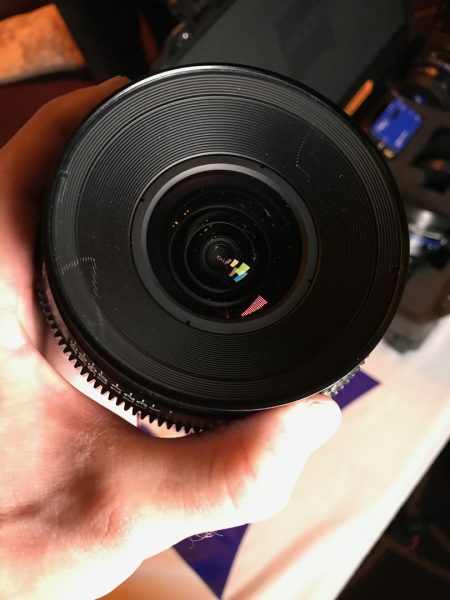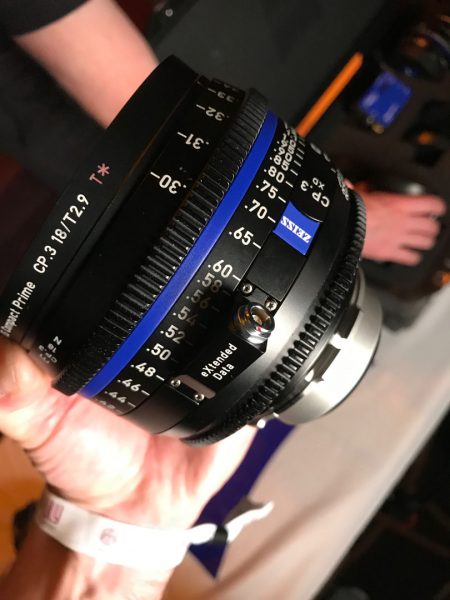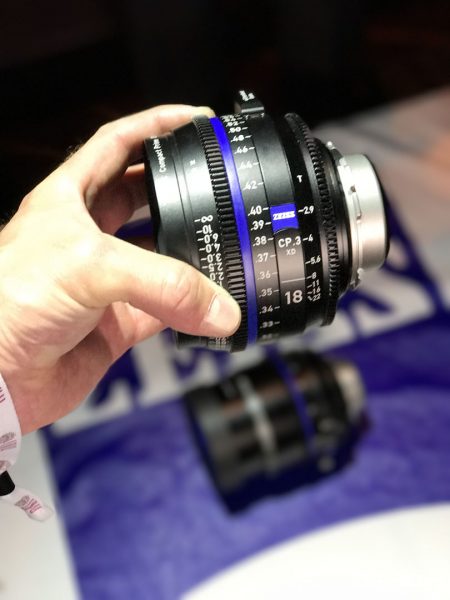The Zeiss CP.3 and CP.3 XD range of lenses have just been announced at NAB, and offer a variety of focal lengths ranging from 15mm to 135mm. T-stops have been made more consistent throughout the range, offering T2.9 from 15 to 21mm and T2.1 from 25 to 135mm. Both the focal lengths and the T-stops are shared with the Zeiss Milvus range. All focal lengths now also cover full frame sensors (the 18mm CP.2 does not).
A step on from CP.2s
Zeiss’s CP.2 cinema lenses have been hugely popular over the last nine years, and Zeiss must be hoping the CP.3s will be too. The physical sizes and weights of the lenses are more consistent across the focal range than CP.2s, and they’re also a lot smaller and more compact. This is largely to make swapping between them on gimbals and drones more straightforward. Focus rings all share a standard position and all the CP.3s have a 95mm front diameter – the CP.2s’ front diameter was 114mm. The apertures all have 14 blades and 300° of focus rotation.

Zeiss CP.3 XD: Compact Primes with added Metadata
Zeiss eXtended Data is a way of recording frame accurate metadata about the lens. It’s based on the open standard Cooke /i technology that’s supported by a range of cameras and accessories. The eXtended Data system logs:
- Lens name, type and focal length
- Calibrated focusing distance
- Calibrated T-stop value
- Real time depth-of-field data and hyperfocal distance
- Horizontal field of view
- Entrance pupil position
In addition the specific metadata implementation by Zeiss provides information about:
- Lens distortion characteristics based on the focal point
- Lens shading characteristics based on focal point and effective T-stop
This means that if your NLE or colour correction software has the correct profile available, you’ll be able to correct for these qualities in post with one click. This data will be provided by Zeiss plugin software: initially this works with Davinci Resolve but support is also planned for ‘other grading, editing and compositing software.’
If you’re monitoring a live picture on set then Pomfort LiveGrade Pro can be used to view and apply the lens characteristics.
Zeiss also have further (unannounced) plans for the eXtended Data system, which will be enabled via firmware updates.
Zeiss CP.3 lens mounts
Lens mounts are interchangeable from the standard PL mount to Canon EF, Nikon F, Sony E or Micro Four Thirds. This can be done by the user so there’s no need to take your lenses back to a Zeiss service centre when you want to change the mounts.
The Zeiss eXtended Data can be passed electronically through the mount to compatible cameras. If your camera isn’t compatible with /i technology you can connect via an external Lemo port to send the data to an external box like the Ambient timecode transceiver.

Price and availability
Zeiss haven’t announced a price for the Zeiss CP.3s yet but in our video interview above they suggest that a standard CP.3 lens will be about €500 more than the CP.2, and the XD versions around €1,500 more. The first five CP.3 focal lengths will start shipping in June, then July/August for the next batch. XD versions will start shipping in September.






